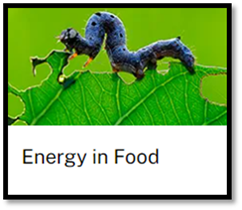Energy in
Food
Learning
Objectives
By the end of the unit, you will understand
that producers absorb sunlight energy and convert it into food through photosynthesis.
Additionally, you will recognize the significance of consumers, including
humans, who obtain energy by consuming producers or other consumers.
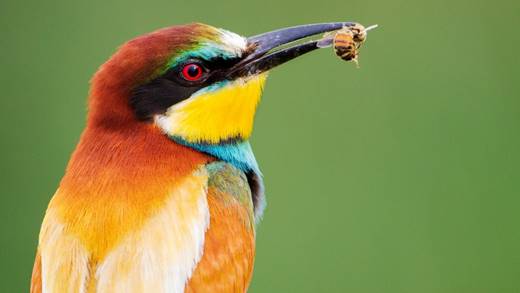
This bird eats insects to get the energy
it needs.
©
Luca Nichett—EyeEm/Getty
Images
Lesson
Summary
In this lesson, you will learn that plants and
some other organisms, known as producers,
absorb the energy released by the
Sun and use it to make their food. Other organisms, known as consumers, get the energy they need by
eating producers or other consumers. All living things, including humans, need energy
in food for growth, survival, and physical and mental activity.
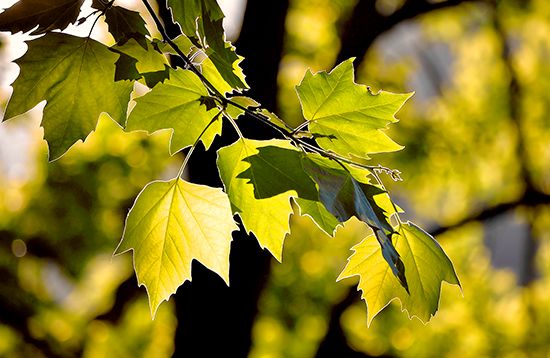
Plants
use energy from the Sun to change water from the soil and carbon dioxide from
the air into sugars and oxygen.
©
Ludmila Oleynik—EyeEm/Getty
Images
Key Concepts
1.
The Sun is super important for all living things because it
gives us the energy to live, grow, and do all sorts of fun activities.
2.
Plants have a neat trick! They use sunlight to make their food,
a process we call photosynthesis. It's like they have their little kitchen
inside them where they cook their food using sunlight!
3.
Animals get their energy by eating plants or other animals. It's
like passing along a baton in a relay race, but with energy! This shows us how
energy moves from one living thing to another, helping everyone survive and do
what they need or want.
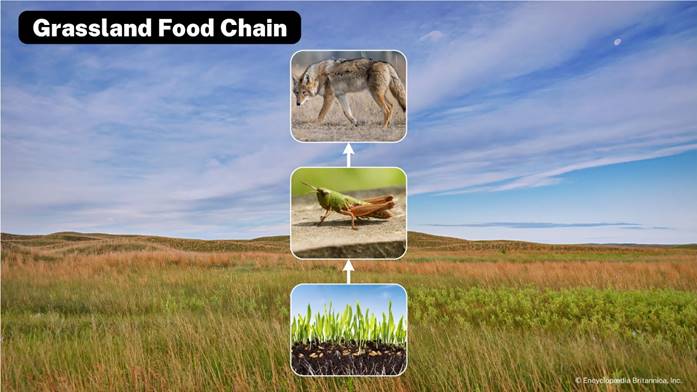
In
this simple food chain, a grasshopper eats grass, and a coyote eats the
grasshopper.
Encyclopædia
Britannica, Inc.
Background
Today you will dive into the fascinating world
of energy and how it relates to living organisms. You will explore how plants
and certain other organisms, called producers, harness the Sun's incredible
power to create their food. You will also uncover the vital roles consumers
plays, organisms that obtain energy by consuming other organisms.
Let's start with producers. These remarkable
organisms, such as plants, possess a unique ability to absorb the energy
released by the Sun through photosynthesis. As humans rely on food for energy,
producers use this captured sunlight to make food. They use a green pigment
called chlorophyll in their leaves to convert light energy into chemical energy
stored in a glucose molecule. This process sustains the plants themselves and
plays a critical role in supporting life on our planet.
Moving on to consumers, we discover a diverse
range of organisms that depend on producers or other consumers for their energy
needs. Consumers come in various forms, from herbivores that eat plants to
carnivores that feast on other animals. There are also omnivores, which have a
mixed diet of plants and animals. Consumers obtain energy by consuming other
living things regardless of their specific dietary preferences.
You may be wondering why energy is essential to
all living organisms, including humans. Well, the energy we derive from food is
crucial for several reasons. Firstly, it fuels our growth, ensuring that we
develop from infants into adults. Secondly, it is vital for our survival, enabling
our bodies to carry out essential functions like breathing, circulating blood,
and maintaining body temperature. Lastly, the energy obtained from food powers
our physical activities, such as running, jumping, and playing, as well as our
mental activities, including thinking, learning, and solving problems.
In summary, this unit will teach you that
plants and other producers capture energy from the Sun to make their food. At
the same time, consumers obtain energy by consuming producers or other consumers.
Energy from food is indispensable for the growth, survival, and physical and
mental activities of all living things, including us humans. As you delve
deeper into the world of science, you will continue to explore the wonders of
energy and its fundamental role in sustaining life on Earth.
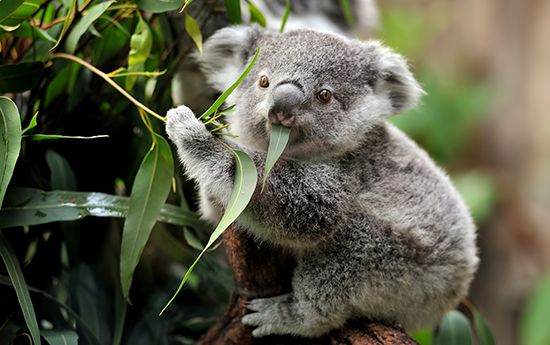
Animals
like this koala use the energy and matter in their food to keep living.
© Freder—iStock/Getty Images
Expedition
Learn
Click on the image to begin your unit.
